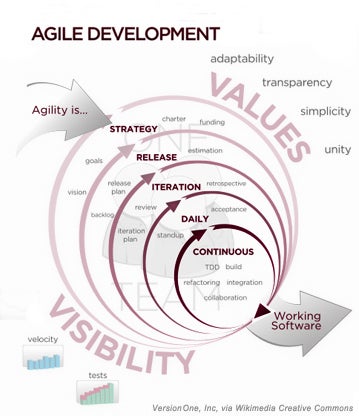What tools and tactics should development partners use in the global effort to end extreme poverty and promote shared prosperity? President Jim Yong Kim has noted that for the World Bank Group, the next frontier will likely include a strong focus on consistent delivery, ensuring that goods and services reach their intended beneficiaries even in the most challenging settings. How might we fix the delivery bottlenecks that contribute to high and rising global inequality?
Like in other industries, consistent delivery in development requires equipping leaders on the front lines with the best available knowledge about what works, while also holding them accountable for generating performance data, and then using these data to adapt their approach to local complexities.
We have a deep understanding of how to generate evidence about what works from field experiments and randomized control trials, tools inspired by clinical trials in medicine. However, there is far less consensus about how to achieve what Dr. Kim calls a readiness to make "constant adjustments, a willingness to take smart risks, and a relentless focus on the details of implementation."
 In a recent post, Owen Barder describes the fundamental challenge in global development – complexity – by drawing on metaphors from the software industry. Owen argues that the development community follows a waterfall model based around rigid implementation of a carefully prepared master plan, rather than an agile model, an adaptive, iterative approach that is highly sensitive to performance metrics throughout implementation. The shift to agile is critical in many sectors, Owen reminds us, because “you cannot design solutions to complex problems: they can only be solved by adaptation and iteration.”
In a recent post, Owen Barder describes the fundamental challenge in global development – complexity – by drawing on metaphors from the software industry. Owen argues that the development community follows a waterfall model based around rigid implementation of a carefully prepared master plan, rather than an agile model, an adaptive, iterative approach that is highly sensitive to performance metrics throughout implementation. The shift to agile is critical in many sectors, Owen reminds us, because “you cannot design solutions to complex problems: they can only be solved by adaptation and iteration.”
Indeed, most work done by most development agencies fits squarely in the waterfall model. Yet all around us, the green shoots of an agile development model are emerging. At the core of this new model are a set of techniques that first emerged in Silicon Valley to manage uncertainty and limit the risk of catastrophic failure. Largely via technologists, these techniques are finding their way into programs that target the hardest delivery challenges in global development.
One technique at the project level is user-centered design, a methodology that forces policy makers to test their assumptions with end users throughout the project preparation lifecycle. With a range of partners including the World Bank, Jamaica’s Ministry of Agriculture recently deployed the user-centered design approach to take on the scourge of praedial larceny, the theft of agriculture produce and livestock. In my recent post with Aleem Walji, we call for the creation of “multi-disciplinary teams with expertise in areas which include behavioral science, technology, and impact evaluation” to use agile development techniques to “work with sector experts on the hardest delivery challenges.”
Another technique, at the portfolio level, is to mandate the use of software platforms that are open and publicly available for all technical systems that are mission critical for delivering goods and services to the poor. Consider the provision of clean water and sanitation, defined by the High-Level Panel on the Post-2015 Development Agenda as an illustrative global goal.
Water point mapping technology is one important input to effective delivery, providing water experts real-time data about who has access to water and what patterns are associated with persistent failure. In a rural sanitation and water supply program in Vietnam, supported by the World Bank and AusAid, operational teams used an open software tool called formhub to create simple smartphone data collection forms and view the functionality of water points on the web. Formhub is key to tracking progress on disbursement-linked indicators based around percentage of the population with access to clean water.
Instead of re-inventing the wheel, a region could mandate formhub or other existing standard. With such a standard established, local water experts and software developers could, with a good idea and a small amount of coding, test a hypothesis about what makes delivery of clean water and sanitation work in their country. Open standards can also be an accelerator for innovative financing mechanisms such as development impact bonds, which promise a financial payoff to private investors who deploy programs that meet predefined development indicators.
When the global development community gathered in New York City in 2000 to set the Millennium Development Goals, technology was an afterthought. As we begin to prepare to set the post-2015 development agenda, technology is the enabler of business as unusual. Seven billion mobile phones create the possibility to reshape delivery and the way that governments and citizens interact with one another. However, an even bigger opportunity may be to harness technology to make development projects more data-driven and adaptive to local context through a process of reinvention and customization. In a word, agile.
Join the discussion: On Oct. 9, 2013, the World Bank will host a live streamed event on the use of information and communication technologies to end extreme poverty, “Development in a Digital Age: Technology and Innovation in the Fight Against Extreme Poverty”. The conversation continues with an online chat Oct. 7-23 at Striking Poverty, and in a crowdsourcing campaign using #thinktech4dev to draw in your ideas for the uses of ICTs for poverty alleviation.



Join the Conversation